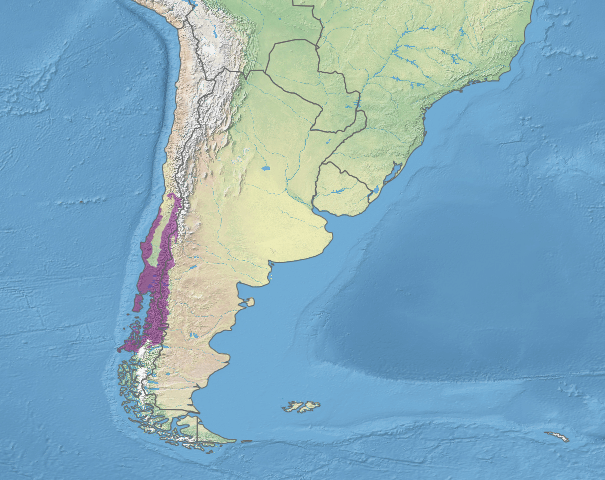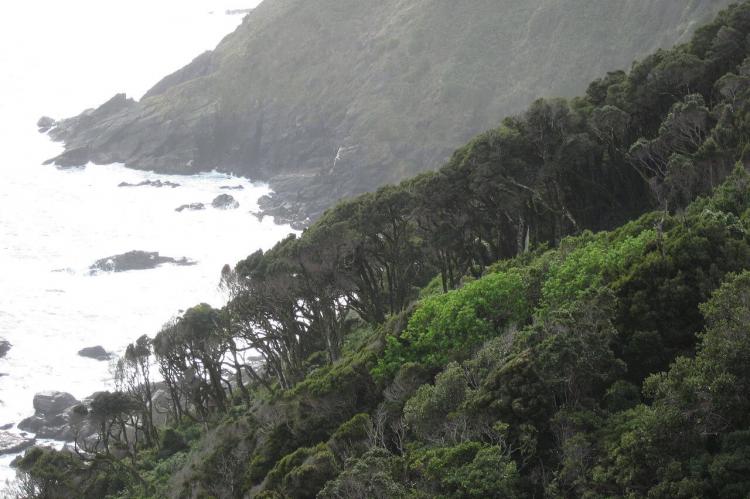Valdivian Temperate Forests: A Unique South American Ecoregion
The Valdivian temperate forests are a vital ecoregion in the Southern Cone of South America, primarily on Chile's west coast with a small extension into Argentina. Renowned for its biodiversity and unique ecological characteristics, the forests are home to many endemic flora and fauna.
The Valdivian Rainforests: Guardians of Biodiversity and Ecological Balance
The Valdivian temperate forests, or Selva Valdiviana, are a distinctive and vital ecoregion located in the Southern Cone of South America, primarily on Chile's west coast, with a small extension into Argentina. This ecoregion spans a narrow continental strip between the western slope of the Andes and the Pacific Ocean and is part of the Neotropical ecozone. Renowned for its biodiversity and unique ecological characteristics, the Valdivian temperate forests are a treasure trove of flora and fauna, many of which are endemic to the region.
Geographic and Climatic Features
The Valdivian temperate forests, part of the more prominent Andean Patagonian Forest (Bosque Andino Patagónico), occupy a relatively narrow coastal strip from roughly 37° to 48° south latitude. During the last ice age, the Patagonian Ice Sheet and other glaciers significantly shaped the region's geography, carving out numerous lakes in the central part of the ecoregion and creating the fjords in the southern part.
The westerlies strongly influence the forests, which bring moisture-laden air that condenses as it rises over the Andes, resulting in significant rainfall. The northward-flowing Humboldt Current also creates humid and foggy conditions near the coast. These climatic factors contribute to the lush, temperate rainforest environment, with summer temperatures averaging 16.5°C (62°F) and winter temperatures dropping below 7°C (45°F).
Flora
The Valdivian temperate forests are characterized by their lush, dense vegetation. The flora is highly diverse, with an estimated 700 to 800 species of vascular plants. The forests are dominated by evergreen angiosperm trees such as the southern beech (Nothofagus spp.), arrayan (Luma apiculata), and ulmo (Eucryphia cordifolia). Conifer species such as the alerce (Fitzroya cupressoides), which can live for thousands of years, also play a significant role in the forest canopy.
The understory is rich in ferns, mosses, and bamboo, creating a thick, almost impenetrable layer that supports a wide variety of plant and animal life. Notable understory species include the Chilean rhubarb (Gunnera tinctoria) and various species of Chusquea bamboo. These diverse plant communities support a complex ecosystem with intricate ecological interactions.
Fauna
The fauna of the Valdivian temperate forests is as diverse and unique as its flora. High levels of endemism characterize the region, with many species found nowhere else in the world. Key mammal species include the monito del monte (Dromiciops gliroides), an ancient marsupial considered a living fossil; the southern pudú (Pudu pudu), the world's smallest deer; and the kodkod (Leopardus guigna), a small wild cat.
Birdlife in the Valdivian forests is abundant and varied, with many endemic species. The Chilean woodstar (Eulidia yarrellii), the Magellanic woodpecker (Campephilus magellanicus), and the chucao tapaculo (Scelorchilus rubecula) are notable examples. Amphibians are also well-represented, with species such as Darwin's frog (Rhinoderma darwinii) and the critically endangered Vanzolini's spiny-chest frog (Alsodes vanzolinii) highlighting the unique herpetofauna of the region.
Ecological Importance
The Valdivian temperate forests are critical for maintaining regional biodiversity and ecological balance. These forests are vital habitats for numerous endemic species and play essential roles in carbon sequestration and climate regulation. They also support various ecosystem services, including water regulation, soil stabilization, and the provision of resources for indigenous communities.
Forests act as a natural barrier against soil erosion, particularly in mountainous regions, where heavy rainfall can lead to landslides. Diverse plant life contributes to soil fertility by decomposing organic matter, creating a rich, nutrient-dense environment that supports various plant and animal species.
Conservation and Threats
Despite their ecological importance, the Valdivian temperate forests face significant threats. Logging for commercial timber and firewood, agricultural expansion, and urban development have led to habitat loss and fragmentation. Invasive species also threaten the native flora and fauna, disrupting ecological balances and outcompeting endemic species.
National parks and reserves protect approximately 25% of the Valdivian temperate forests ecoregion to combat these threats. In Argentina, protected areas include Los Alerces National Park, Los Arrayanes National Park, Lago Puelo National Park, Lanín National Park, and Nahuel Huapí National Park. In Chile, the protected areas include Alerce Andino National Park, Alerce Costero National Park, Bosque de Fray Jorge National Park, Chiloé National Park, Huerquehue National Park, Pumalin Douglas Thompkins National Park, Puyehue National Park, Queulat National Park, Vicente Perez Rosales National Park, and Villarrica National Park.
Conservation efforts involve collaboration between local communities, governments, and international organizations. Initiatives include habitat restoration projects, sustainable forestry practices, and ecotourism promotion to generate income while preserving natural resources.
Cultural Significance
The Valdivian temperate forests hold cultural significance for the Indigenous Mapuche people, who have lived in harmony with the land for centuries. The forests provide medicinal plants, food resources, and materials for traditional crafts. The Mapuche's deep connection to the land is reflected in their cultural practices, stories, and rituals, many of which are intertwined with the natural cycles and biodiversity of the forests.
Efforts to preserve the Valdivian temperate forests also focus on protecting indigenous rights and knowledge. Integrating traditional ecological knowledge with modern conservation practices enhances the effectiveness of preservation efforts and ensures the maintenance of the region's cultural heritage.
Conclusion
The Valdivian temperate forests are a unique and vital ecoregion rich in biodiversity and ecological significance. Their intricate web of flora and fauna and distinctive geographic and climatic conditions make them an essential part of the South American landscape. Continued conservation efforts are crucial to preserving this remarkable natural heritage for future generations and ensuring that the forests thrive as a sanctuary for endemic species and a source of ecological balance.

Map depicting the location of the Valdivian temperate forests (in purple)
